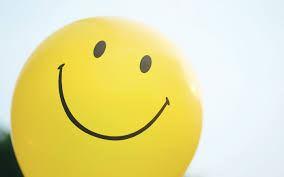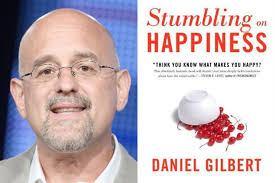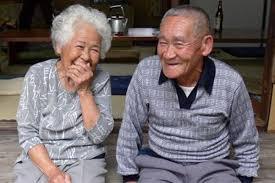 My humanist group recently viewed the 2012 documentary film “Happy.” The pursuit of happiness is a basic American (or human) right. But what is “happiness?” If it’s a feeling, and your pursuit ends in getting it, what then?
My humanist group recently viewed the 2012 documentary film “Happy.” The pursuit of happiness is a basic American (or human) right. But what is “happiness?” If it’s a feeling, and your pursuit ends in getting it, what then?
This suggests that a sensation at a given moment, necessarily transitory, is not the true aim. The Greeks spoke of eudaimonia, a life well lived. Not the feelings of a moment, but of one’s life in its wholeness.

Indeed, studies show such life circumstances account for only about 10% of happiness. Fifty percent is genetic, giving each of us a baseline “set point,” to which one’s mood reverts after the impact of some stimulus, good or bad, tails off. And the remaining 40% is a function of what we do.
Dopamine is a chemical, a “neurotransmitter,” produced in the brain, which induces sensations of pleasure and happiness. There’s a “use it or lose it” aspect to dopamine. Thus a key route to feeling happy is to seek out experiences that trigger dopamine release. Physical activity does this; especially when involving novelty.
Appearing in the film was psychologist Mihaly Csikszentmihalyi, who gave us the concept of “flow.” This is when one is completely absorbed in an activity, subsuming all quotidian concerns. Good for dopamine.

Similarly, we over-estimate the impact of bad turns. Illustrative here was Melissa Moody, disfigured in a horrible accident. She not only adapted to her “new normal,” it actually gave her an enhanced perspective on life, and ultimately greater happiness than before.
Schwartz’s book also distinguishes between two personality types: “maximizers” who aim for achieving the best in any situation, and “satisficers” for whom the watchword is “good enough.” It turns out the latter are actually happier with what they get. And another key aspect of happiness is feeling gratitude for what you do have.
The film portrayed Japan as the least happy industrialized nation. Flattened by WWII, Japan emphasized rebuilding, making for an economic miracle of affluence rising from ashes. However, that went to an unhealthy extreme, creating a culture of all work and no play. They even have a word, “karoshi,” for death by overwork — not a metaphor but an all too common reality.

Bhutan, meanwhile, has sought to de-emphasize Gross National Product in favor of “Gross National Happiness.” That might sound like gooey happy-talk; and while it does make sense to recognize that there’s more to life than wealth production, one film attendee was disturbed at the idea of Bhutan’s government not just pushing happiness but imposing its own prescription for it. Bringing to mind her one-time home — the USSR.

As I keep stressing, social cooperation was a powerful driver in human evolution; we lived in bands where that was essential for group survival. Studies repeatedly show that the healthiest and happiest people are those with the strongest ties to others. Many strive for popularity, attractiveness, and status in the eyes of others. But such superficialties don’t do it for them; they tend to be less happy, and more anxiety-ridden, than those who relate to others with compassion, caring, and love. This was exemplified by the film’s last profile, a man who gave up “normal” life to devote himself to caring for afflicted people in Mother Teresa’s Kolkata sanctuary.

